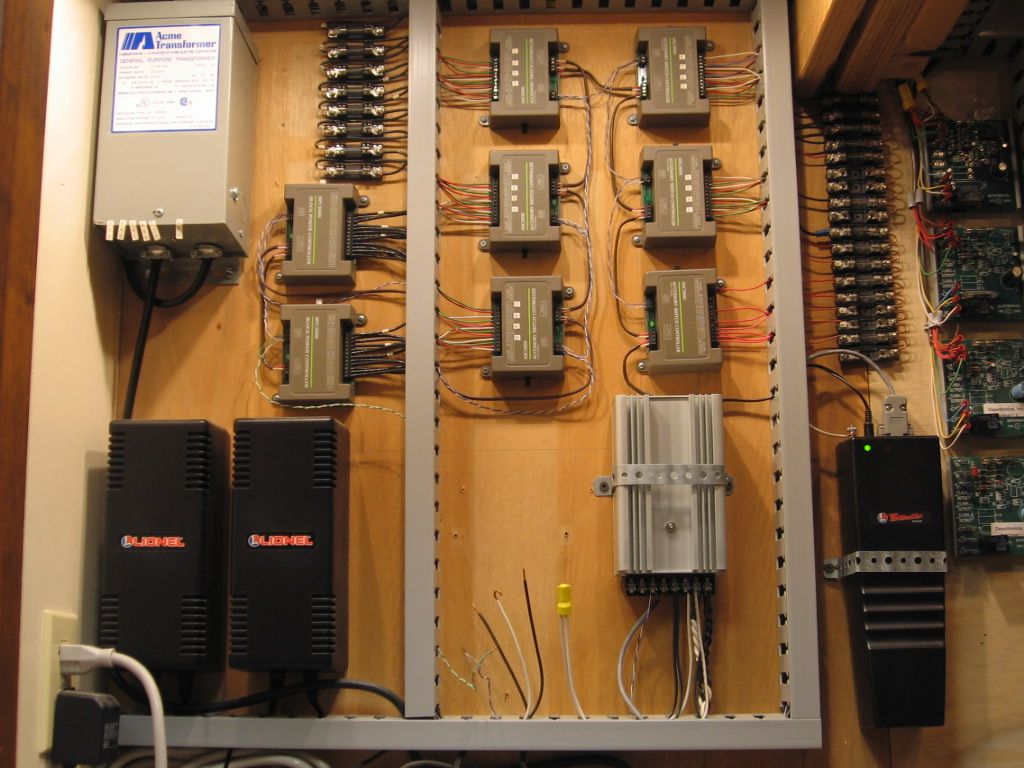I am spoiled..I ran DCC in HO..and had lighted passenger, and 3 to 6 engines pulling 40 to 60 car long trains..DIGITRAX...
So now Im into MTH O..I have 1 Lionel 180v 10amp brick..powering, via fixed on my TIU, about 100' of loop times 2...13 lighted passenger cars and 2 MTH engines..and I am popping the brick protector..or 2 engines 1 steam, 1 diesel, continuous running and a diesel doing switching, and pop the brick..
Also I have an MTH 750 watt supply powering the TIU
And I have another 750 and a 1000 watt MTH..
I am a Low Voltage Technician..I install and repair all forms of low voltage circuits and systems from CCTV to DOOR SECURITY TO FIRE ALARM..VDVC, CABLE and secure Networks...but AC on my trains makes me nervous...an ELECTRICIAN I am not...
All I can see is my Engines letting the smoke out...and me crying...
I have no one, who has O scale, that I can go learn from..
I am a visual learner..once I see it..I got it..
I hear of others increasing amps, which I know , current only draws what the load requires..1 steam and 3 lighted passenger cars draws almost 6 amps in neutral..I hoped with the 180v, 10 amp..I could solve the issue and run a few trains...
I have 16g thhn..parallel but no blocks
No accessories..except MTH turnouts..and I throw them manually for now..they do self align still...
I want reliable operation for 3 to 5 engines..I like to have two on circles as I switch out cars...
Is there a better way using what I already have, that I am missing..
I want to power each loop, plus have 2 yards..one for DCS, the other for conventional, for a young nephew to run on..
A schematic would be helpful
Also how do I set a variable channel to a fixed channel on my TIU..to power a yard..
There has to be an easier way..I must be missing...I want to accomplish smooth running before the wifi module is in my home..so I can have friends and family join in the fun if almost wrecking my trains...I need my heart rate dramatically increased....

Thanks all for your replies













